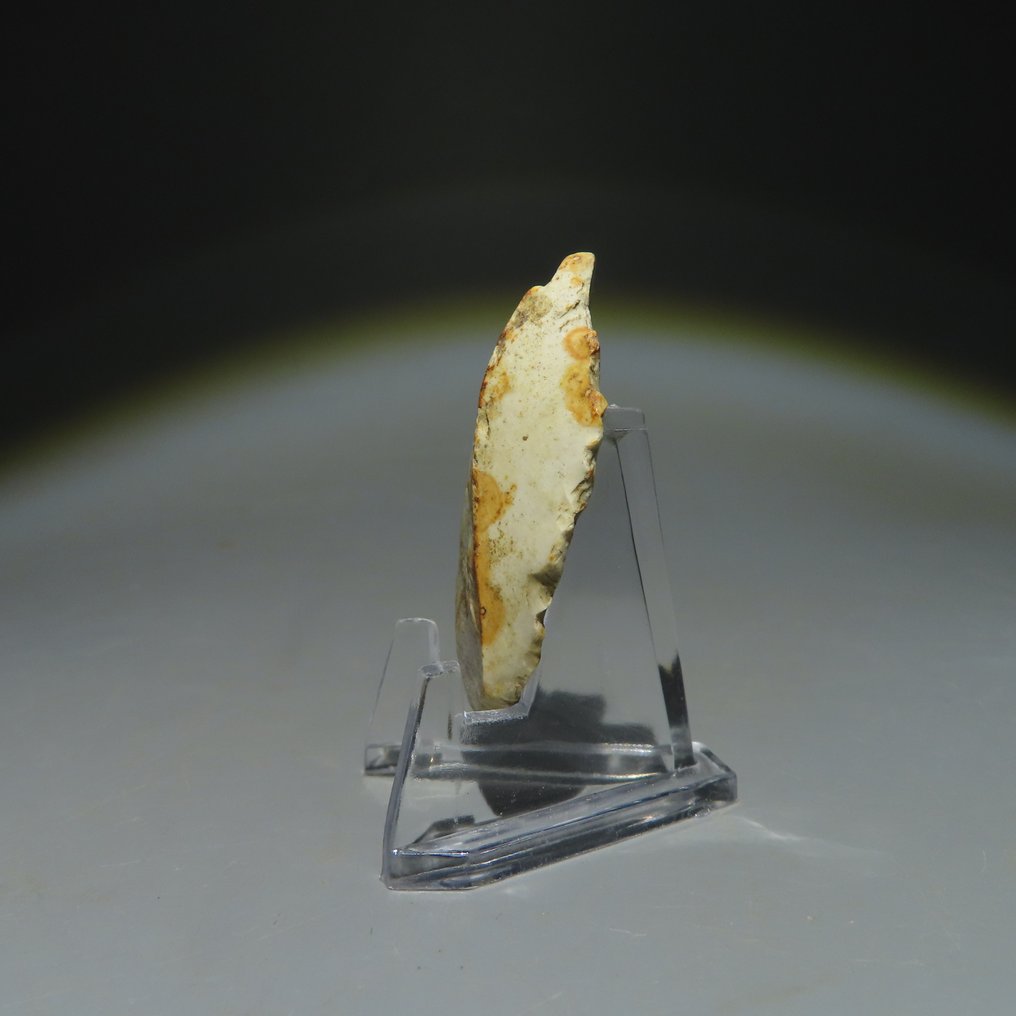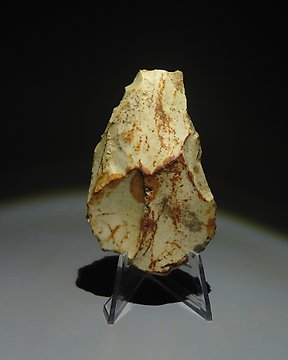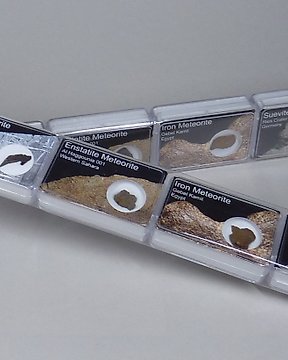Todo correcto. Gracias
Ver traduzidoNeolítico Pedra/Sílex Ferramenta de pederneira. Cultura Michelsberg (encontrada em Spiennes, Mons, Bélgica). 4500-3500 (Sem preço de reserva)
N.º 85432387



Flint tool
Michelsberg Culture (found in Spiennes, Mons, Belgium).
Neolithic Period, circa 4500-3500 B.C.
Height 4 cm H
PROVENANCE:
- Found in 1979 at Camp-à-Cayaux, near Spiennes (Mons), Belgium.
- Then in the holdings of a private museum in Amersfoort, the Netherlands.
- Acquired from this by the Dutch antique dealer W. Stormbroek.
- Acquired as a group when it closed down in 2010. Since then in the inventory of the Galerie Alte Römer, Germany.
- Spanish private collection.
CONDITION: Unrestored, as found.
PARALLELS: For similar material see Centre de Recherche Archéologique du Camp à Cayaux (Spiennes, Belgique).
DOCUMENTS:
- Export license issued by the Ministry of Culture, Madrid, Spain.
DESCRIPCTION:
The Michelsberg culture belongs to the Central European Late Neolithic. Its distribution covered much of West Central Europe, along both sides of the Rhine. A detailed chronology, based on pottery, was produced in the 1960s by the German archaeologist Jens Lüning. Its dates are c. 4400–3500 BC. Its conventional name is derived from that of an important excavated site on Michelsberg (short for Michaelsberg) hill near Untergrombach, between Karlsruhe and Heidelberg (Baden-Württemberg).
The Neolithic Flint Mines of Spiennes occupy two chalk plateaux located to the south-east of the city of Mons. They cover an area essentially devoted to agriculture. The site appears on the surface as a large area of meadows and fields strewn with millions of scraps of worked flint. Underground, the site is an immense network of galleries linked to the surface by vertical shafts dug by Neolithic populations.
The Neolithic Flint Mines of Spiennes are the largest and earliest concentration of ancient mines of north-west Europe. The mines were in operation for many centuries and the remains vividly illustrate the development and adaptation of mining techniques employed by prehistoric populations in order to exploit large deposits of a material that was essential for the production of tools and cultural evolution generally. They are also remarkable by the diversity of technical mining solutions implemented and by the fact that they are directly linked to a habitat contemporary to them.
In the Neolithic period, (from the last third of the 5th millennium until the first half of the 3rd millennium), the site was the centre of intensive flint mining present underground. Different techniques were used, the most spectacular and characteristic of which was the digging out of shafts of 0.8 to 1.20m in diameter with a depth down to 16 metres. Neolithic populations could thus pass below levels made up of large blocks of flint (up to 2m in length) that they extracted using a particular technique called ‘striking’ (freeing from below with support of a central chalk wall, shoring up of the block, removal of the wall, removal of the props and lowering of the block). The density of the shafts is important, as many as 5,000 in the zone called Petit Spiennes (14 ha), leading to criss-crossing of pits and shafts in some sectors.
The neolithic flint mines near Spienne in Belgium are part of UNESCO's world heritage since the year 2000 (Id. N°: 1006). With the second half of the 5. Millenium BC stone from the Spienne mine was worked in socially increasingly complex neolithic groups in that region. No doubt a source of wealth to that cultures.
The groups of that area are refered to as Michaelsberg culture. They flourished from the mid 5th Millenium BC until the mid 4th Millenium BC in middle Europe. Their culture streched from Germany, northern France to Belgium. Around Spienne, it was finally replaced by the Seine-Oise-Marne culture, which did not use the nearby mine anymore
Notes:
The seller guarantees that he acquired this piece according to all national and international laws related to the ownership of cultural property. Provenance statement seen by Catawiki.
The piece includes authenticity certificate.
The piece includes Spanish Export License (Passport for European Union) - If the piece is destined outside the European Union a substitution of the export permit should be requested. This process could take between 1 and 2 months.
Mais sobre o vendedor
Flint tool
Michelsberg Culture (found in Spiennes, Mons, Belgium).
Neolithic Period, circa 4500-3500 B.C.
Height 4 cm H
PROVENANCE:
- Found in 1979 at Camp-à-Cayaux, near Spiennes (Mons), Belgium.
- Then in the holdings of a private museum in Amersfoort, the Netherlands.
- Acquired from this by the Dutch antique dealer W. Stormbroek.
- Acquired as a group when it closed down in 2010. Since then in the inventory of the Galerie Alte Römer, Germany.
- Spanish private collection.
CONDITION: Unrestored, as found.
PARALLELS: For similar material see Centre de Recherche Archéologique du Camp à Cayaux (Spiennes, Belgique).
DOCUMENTS:
- Export license issued by the Ministry of Culture, Madrid, Spain.
DESCRIPCTION:
The Michelsberg culture belongs to the Central European Late Neolithic. Its distribution covered much of West Central Europe, along both sides of the Rhine. A detailed chronology, based on pottery, was produced in the 1960s by the German archaeologist Jens Lüning. Its dates are c. 4400–3500 BC. Its conventional name is derived from that of an important excavated site on Michelsberg (short for Michaelsberg) hill near Untergrombach, between Karlsruhe and Heidelberg (Baden-Württemberg).
The Neolithic Flint Mines of Spiennes occupy two chalk plateaux located to the south-east of the city of Mons. They cover an area essentially devoted to agriculture. The site appears on the surface as a large area of meadows and fields strewn with millions of scraps of worked flint. Underground, the site is an immense network of galleries linked to the surface by vertical shafts dug by Neolithic populations.
The Neolithic Flint Mines of Spiennes are the largest and earliest concentration of ancient mines of north-west Europe. The mines were in operation for many centuries and the remains vividly illustrate the development and adaptation of mining techniques employed by prehistoric populations in order to exploit large deposits of a material that was essential for the production of tools and cultural evolution generally. They are also remarkable by the diversity of technical mining solutions implemented and by the fact that they are directly linked to a habitat contemporary to them.
In the Neolithic period, (from the last third of the 5th millennium until the first half of the 3rd millennium), the site was the centre of intensive flint mining present underground. Different techniques were used, the most spectacular and characteristic of which was the digging out of shafts of 0.8 to 1.20m in diameter with a depth down to 16 metres. Neolithic populations could thus pass below levels made up of large blocks of flint (up to 2m in length) that they extracted using a particular technique called ‘striking’ (freeing from below with support of a central chalk wall, shoring up of the block, removal of the wall, removal of the props and lowering of the block). The density of the shafts is important, as many as 5,000 in the zone called Petit Spiennes (14 ha), leading to criss-crossing of pits and shafts in some sectors.
The neolithic flint mines near Spienne in Belgium are part of UNESCO's world heritage since the year 2000 (Id. N°: 1006). With the second half of the 5. Millenium BC stone from the Spienne mine was worked in socially increasingly complex neolithic groups in that region. No doubt a source of wealth to that cultures.
The groups of that area are refered to as Michaelsberg culture. They flourished from the mid 5th Millenium BC until the mid 4th Millenium BC in middle Europe. Their culture streched from Germany, northern France to Belgium. Around Spienne, it was finally replaced by the Seine-Oise-Marne culture, which did not use the nearby mine anymore
Notes:
The seller guarantees that he acquired this piece according to all national and international laws related to the ownership of cultural property. Provenance statement seen by Catawiki.
The piece includes authenticity certificate.
The piece includes Spanish Export License (Passport for European Union) - If the piece is destined outside the European Union a substitution of the export permit should be requested. This process could take between 1 and 2 months.
Mais sobre o vendedor
- 748
- 7
- 1
Très beaux objets!!! Livraison rapide et soignée. Meeci👏🏻
Ver traduzidoTop vendeur
Ver traduzidoEl objeto decía estar en perfecto estado , intacto y en buena condición. Sin embargo estaba dañado y el silbato no funcionaba. Fue un engaño. Lamento la mala informacion
Ver traduzidoFast delivery, object fine. However, bad carrier: please never use again DHL express as they are "DHL slow": instead of coming to my address, they put it directly to a DHL Service Point/Locker.
Ver traduzidoTodo correcto
Ver traduzidoI am very happy with the ancient bronze horse. Excellent that it was delivered within a few days. My compliments to J.Bagot Arqueologia- Ancient Art, well done! Ron van Schaick
Ver traduzidoPerfect transaction and fantastic item. Thank you.
Ver traduzidoconforme rapide hope other thanks ++++
Ver traduzidoKülönleges eszköz, jó állapotban van, köszönöm a rendkívül gyors szállítást. Ajánlom az Eladót!
Ver traduzidofast delivery, good packaging
Ver traduzidoGood seller: fast shipment, good packing and a very nice object. Thank you!
Ver traduzidosuper 💯💯💯💯💯
Ver traduzidoIl pezzo è arrivato in condizioni perfette il pacco era protetto alla perfezione
Ver traduzidoBuenos días, señor. ¡Gracias por las precauciones de embalaje Tip / Top! Muy contento con mi compra. ¡Gracias!
Ver traduzidoPerfecto! :)
Ver traduzidoWunderbares Stück. Alles wie beschrieben. Hervorragender Kontakt.
Ver traduzidoExtremely rapid courrier service from Barcelona to Flanders, picture was nicely and carefully packaged. Muchas gracias!
Ver traduzidoVery fine specimen! Thanks.
Ver traduzidogoede foto's, goede omschrijving, goed verpakt en snel verzonden.
Ver traduzidomolto bello tutto ok
Ver traduzidoPezzo come da descrizione, davvero notevole. Venditore molto consigliato in quanto gentile e disponibile. spedizione molto veloce. Ottimo!
Ver traduzidoVenditore davvero ottimo e gentile. Merce come da descrizione, spedizione veloce. Ottimo l'avere certificato di autenticità.
Ver traduzidoUn 100 como empresa un 100 como envío . Empresa muy especial con mucha exquisitez en todos los productos y en personal . Muchas gracias
Ver traduzidoAviso Legal
O vendedor garante e pode provar que o objeto foi obtido legalmente. O vendedor foi informado pela Catawiki que tinha de fornecer a documentação exigida pelas leis e regulamentos do seu país de residência. O vendedor garante que tem o direito de vender/exportar este objeto. O vendedor fornecerá ao comprador toda a informação conhecida sobre a proveniência do objeto. O vendedor garante que serão ou já foram obtidas todas as autorizações necessárias. O vendedor informará imediatamente o comprador de quaisquer atrasos na obtenção de tais autorizações.
O vendedor garante e pode provar que o objeto foi obtido legalmente. O vendedor foi informado pela Catawiki que tinha de fornecer a documentação exigida pelas leis e regulamentos do seu país de residência. O vendedor garante que tem o direito de vender/exportar este objeto. O vendedor fornecerá ao comprador toda a informação conhecida sobre a proveniência do objeto. O vendedor garante que serão ou já foram obtidas todas as autorizações necessárias. O vendedor informará imediatamente o comprador de quaisquer atrasos na obtenção de tais autorizações.









